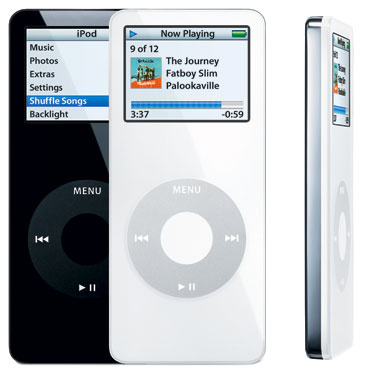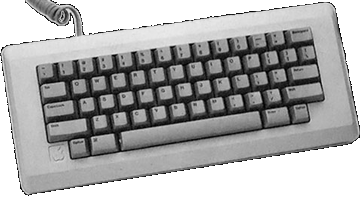iPod nano

Essentials
Family: iPod
Codename: ?
Minimum OS: iPod nano OS 1.0
Maximum OS: iPod nano OS 1.3.1
Introduced: September 2005
Terminated: September 2006
Processor
CPU: ARM7TDMI
CPU Speed: dual 80 MHz embedded (?)
FPU: none
Register Width: 32-bit
Data Bus Width: 32-bit
Address Bus Width: 32-bit
ROM: 32 MB (?)
Onboard RAM: 32 MB (?)
Maximum RAM: 32 MB (?)
Video
Screen: 1.5" backlit LCD
Max Resolution: 16-bit 176 x 132
Storage
Flash Drive: 1/2/4 GB
Input/Output
USB: via Dock Connector
Audio Out: stereo 16 bit mini
Speaker: clicker
Miscellaneous
Dimensions: 3.5" H x 1.6" W x 0.27" D
Weight: .094 lbs.
Announced in September 2005, The iPod nano represented a bold decision for Apple: to replace the best-selling iPod mini, at the height of its market dominance, with a brand-new, significantly different iPod model. Whereas the mini had been based around a 1" hard drive, the iPod nano was built around a 2 or 4 GB flash memory drive. The iPod nano's look and feel was more aesthetically aligned with that of the iPod color than the mini's had been. It also included a higher-resolution color screen, which, along with the remarkable decrease in physical size (half the thickness, 25% less wide), helped to justify the reduction in capacity. Although the nano held fewer songs per dollar than its predecessor, Apple sold the 2 and 4 GB nano models at the same price point as the previous 4 and 6 GB mini models: $199 and $249, respectively. Both models were available both in black and the traditional iPod white. In February 2006 a 1 GB model was added, priced at $149. All models were discontinued in September 2006, with the release of the iPod nano (Second Generation).
Picture Credits:
Apple, Inc.
